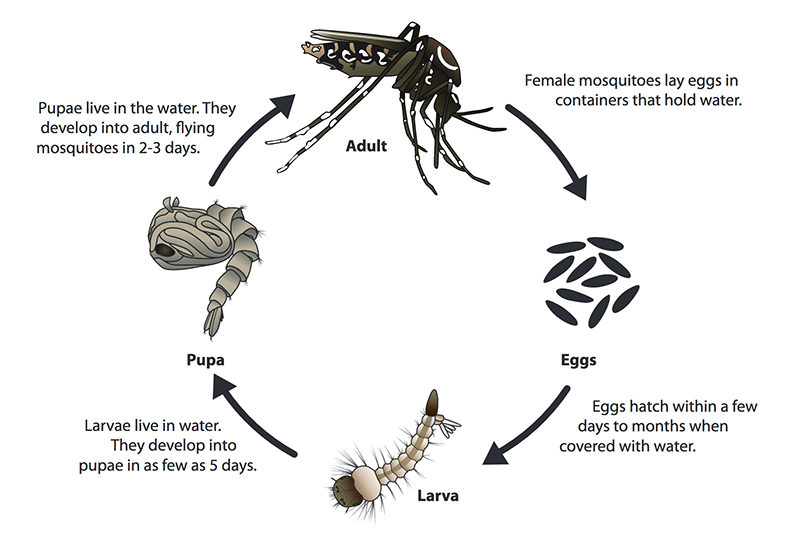The lifecycle of a mosquito consists of four stages:
- egg,
- larva,
- pupa,
- adult.
The female mosquito lays her eggs on the surface of stagnant water such as pools, ponds, and other water bodies. The eggs hatch into larvae within 24-48 hours.
The larva or the "wriggler" stage lasts anywhere from four to 14 days, depending on the mosquito species and the ambient temperature. These larvae float just below the surface of the water and feed on microorganisms in the water. They must come to the surface of the water to breathe through a siphon tube that projects from the end of the abdomen.
The next stage, the pupa or "tumbler" stage will last between one to four days. At this stage, the mosquito does not feed but continues development. The pupa spends its time tumbling or rolling around in the water while respiratory filaments at the end of its abdomen draw oxygen from the air.
Finally, the adult mosquito emerges from the pupa when development is complete, typically during the morning or evening. After resting on the surface of the water for a short period, the adult mosquito will fly away. Female mosquitoes will search for blood to feed on to get the protein required for the development of their eggs. Males, on the other hand, feed on nectar or other plant juices. The lifespan of a mosquito varies, but on average, a mosquito will live for only a few weeks.
In summary, the mosquito lifecycle involves the following stages: egg, larva, pupa, and adult. The larvae and pupae stages take place in stagnant water, and once the mosquito reaches adulthood, it will emerge and seek a blood meal to continue the reproductive cycle.
